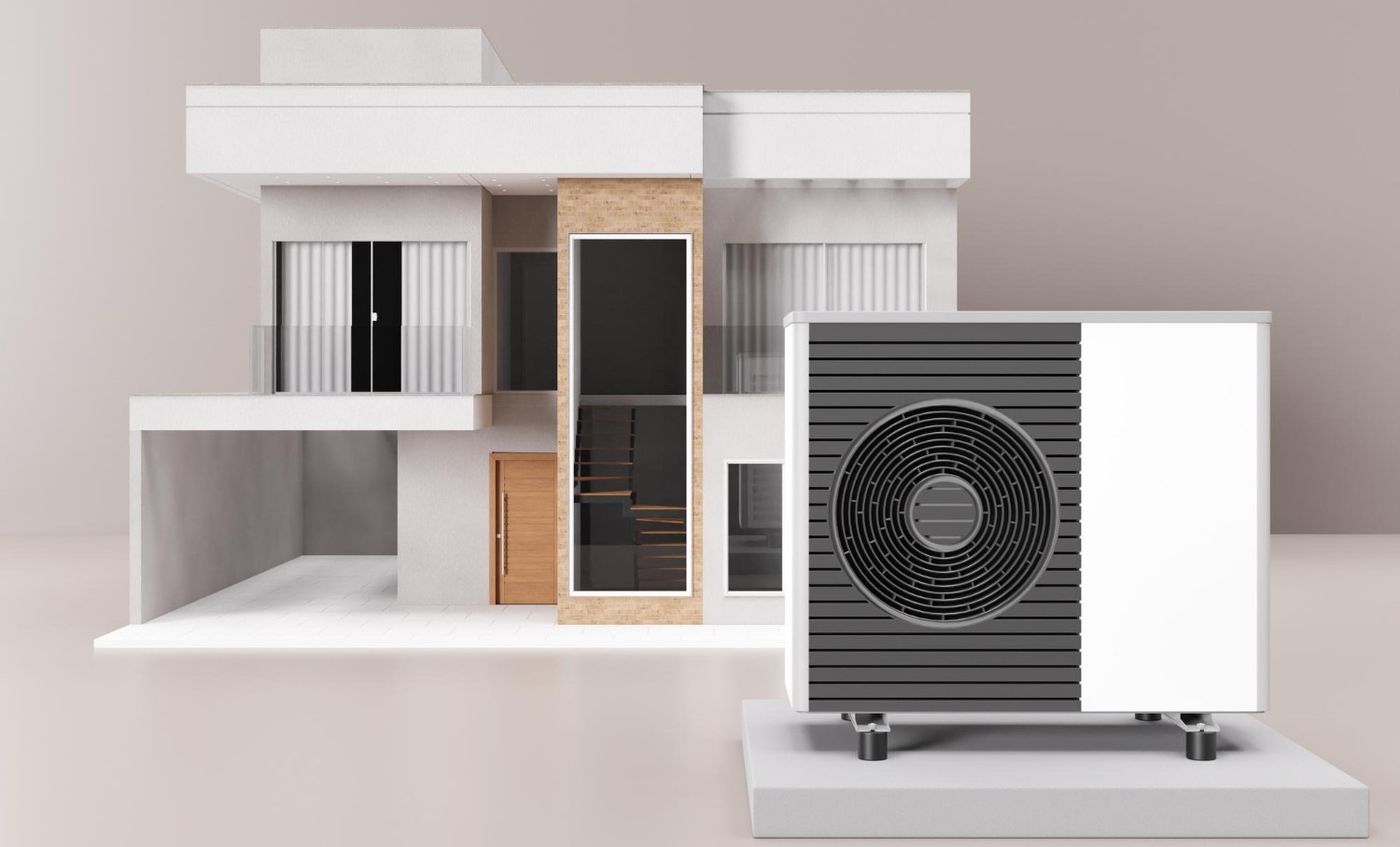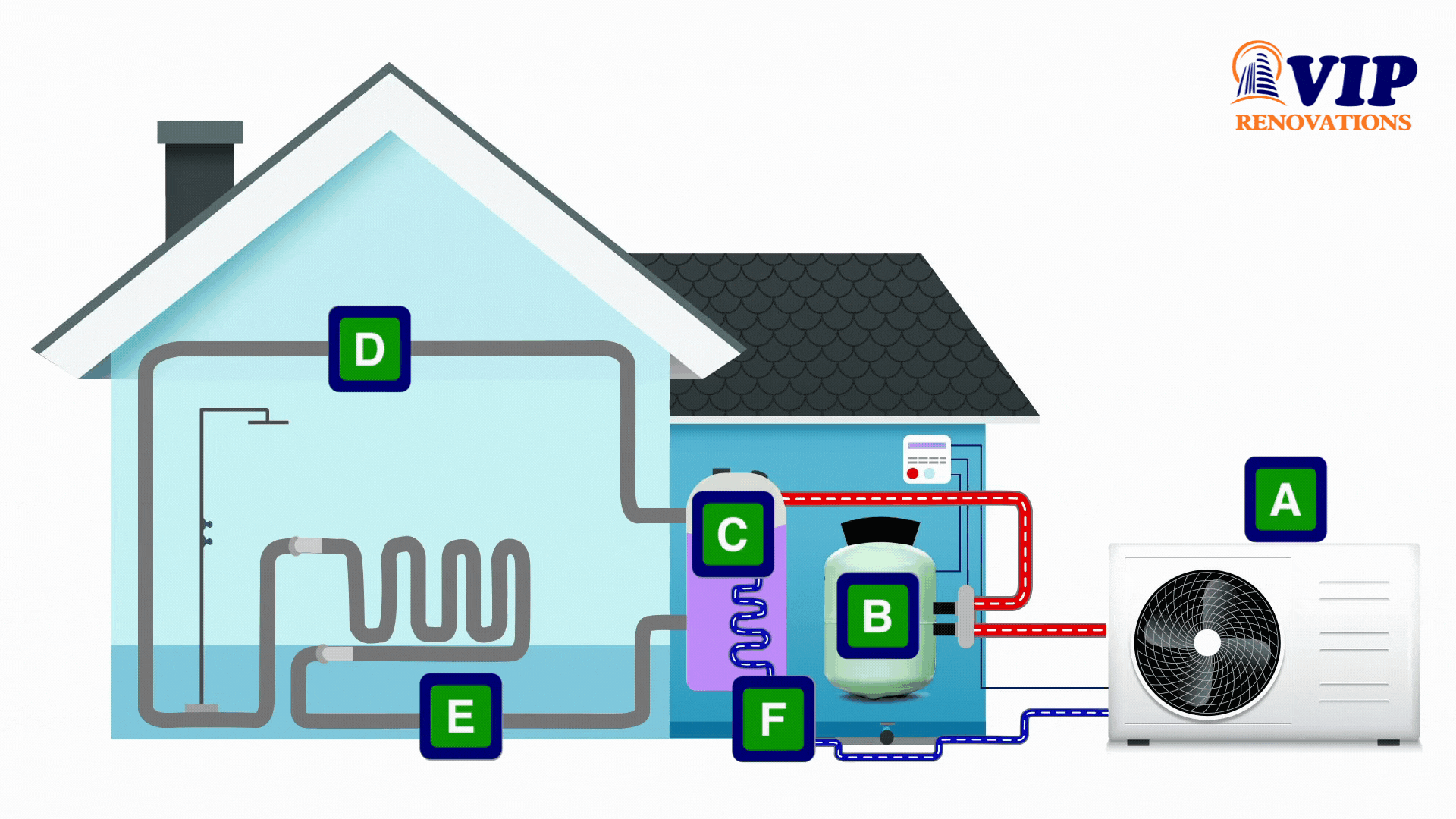
A heat pump can be used as a heating and cooling system for your home and is typically installed outdoors.
During colder months, the heat pump extracts warmth from the frigid outdoor air and transfers it inside, while in warmer months, it can be used to remove heat from the indoor air to cool your home.
Heat pumps syestem are powered by electricity and use refrigerant to transfer heat, ensuring year-round comfort.
Since they can handle both cooling and heating, homeowners may not require separate systems to heat their homes. An electric heat strip can be installed in the indoor fan coil in colder areas to enhance its capabilities.
It harness environmental energy such as air, water, or ground heat and convert it using a refrigerant to generate heat and hot water for your home.

The International Energy Agency’s latest special report emphasizes that gas boilers must not be sold after 2025 if the Net Zero targets for 2050 are to be met.
Heat pumps are anticipated to be a superior, low-carbon substitute for heating homes in the near future.
Heat pumps play a vital role in the Climate Action Plan following the Climate Act 2021, which commits Ireland to a legally binding target of net-zero greenhouse gas emissions no later than 2050, and a reduction of 51% by 2030. These targets are a key pillar of the Programme for Irish Government.
At VIP Ventilation and Airconditioning, we offer air to water heat pumps, as they are becoming increasingly popular due to their ability to transform ambient air into a reliable source of warmth.
Selecting the appropriate heat pump for a house depends on its requirements. In Ireland, air to water heat pumps are commonly used in retrofit projects since they are compatible with existing heating systems. Nevertheless, they are also a great option for new-build properties due to their versatility.

It’s fascinating to learn that an air to water heat pump can significantly reduce your heating costs.
Compared to conventional fossil fuel systems like oil or gas boilers, an air-to-water heat pump can cost up to 60% less to heat your home due to its high efficiency, which can range from 320% to 400% or more.
In contrast, even a condensing boiler has an efficiency of only 92%. In essence, for every four units of heat that enter your house or building, three of those units come from the outside environment for free. This is why an air-to-water heat pump’s main benefit is its efficiency, resulting in low heating costs for your home or building.
A heat pump that transfers air to water can achieve an impressive efficiency rating of 200%-400%.
This is also known as a coefficient of performance (COP) of 2 to 4.
This means that it can produce up to four times the amount of electricity it uses. The heat pump captures low-grade air and transfers it through the system to generate optimal heating and hot water for your home.
As long as the COP remains above 1, you will produce more heat than the electrical energy consumed.
To help calculate the COP of a heat pump, we can use a 9-kilowatt (kW) heat pump as an example.
In this case, the heat pump consumes 3kW of electricity and produces 9kW of heat output. The remaining 6kW comes from the ambient air outside.
To calculate the COP, we divide the heat output by the electrical input. In this case, the COP is 3, indicating that for every unit of electricity used, the heat pump generates three units of heat.
This demonstrates the efficiency and effectiveness of a heat pump system.
It is important to have a good understanding of how your heating system works to make sure it’s running efficiently.

The outdoor unit takes in heat from the air surrounding it. This heat is then passed on to the coolant, which is responsible for carrying the heat throughout the system.
The coolant temperature is increased by a compressor, which boosts the heat energy it contains.
Next, the heat from the coolant is transferred through a heat exchanger. This is what moves the heat from the coolant to a hot water reserve tank and radiators.
The tank stores hot water, which is then circulated throughout the house to heat the faucets.
As the hot water is used, it's replaced with cold water that travels back to the reserve tank.
The reserve tank's water cools down the coolant, which then heads back to the outdoor unit. The coolant is then heated up again, and the cycle starts anew.